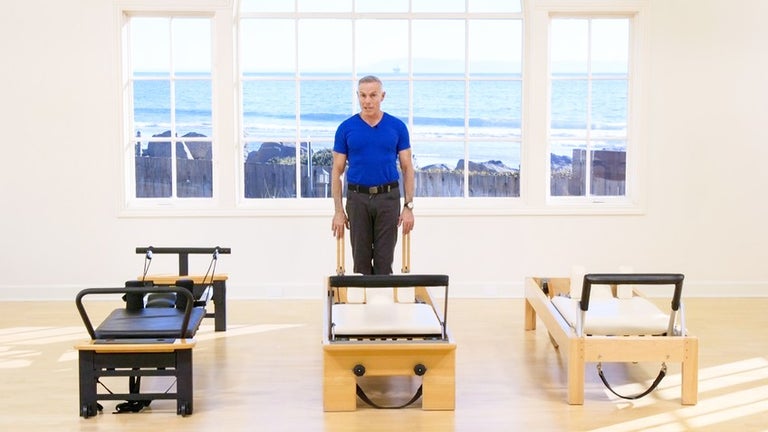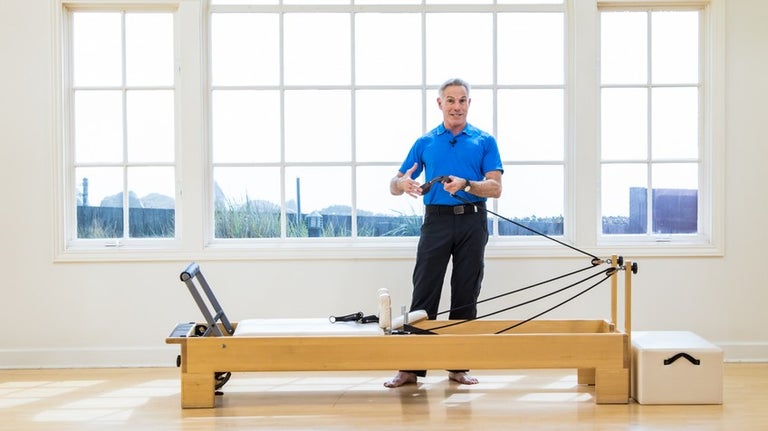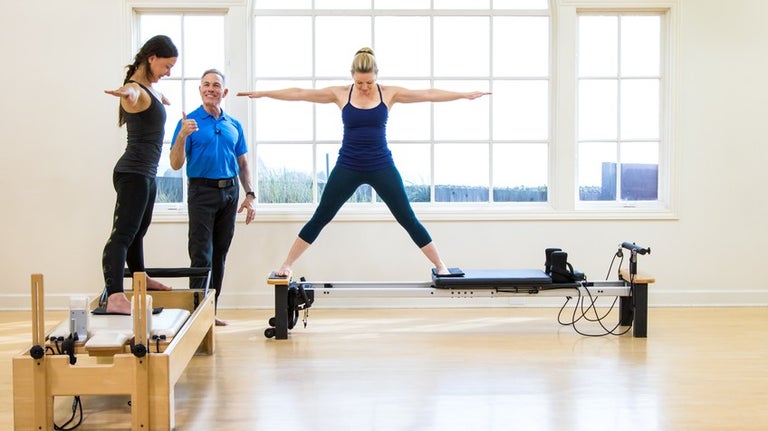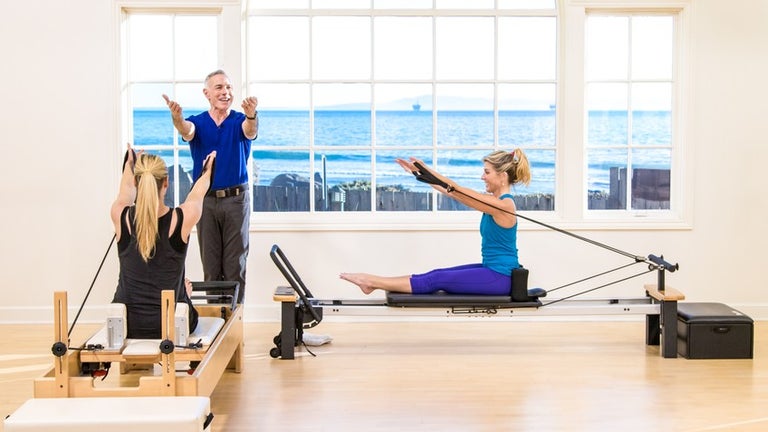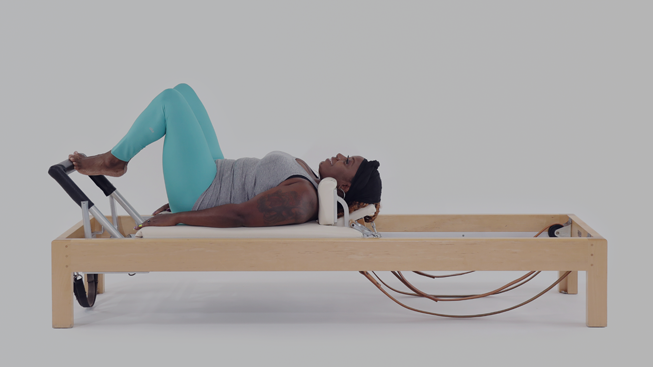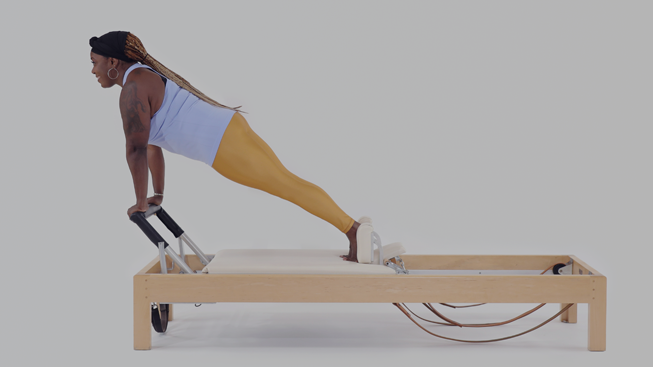About the Pilates Reformer
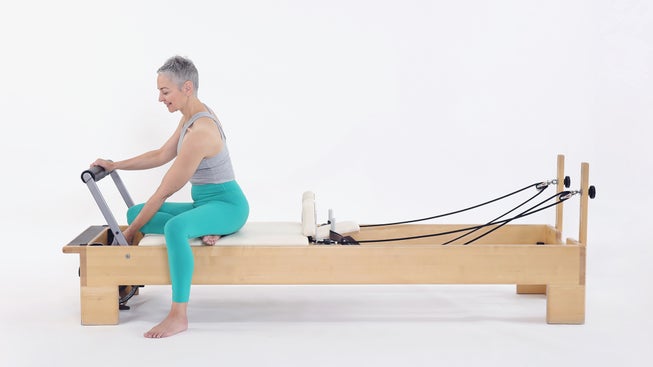
An Introduction to the Pilates Reformer
The Reformer is the first piece of Pilates equipment Joseph Pilates invented after developing his Mat Pilates Method. Commonly referred to as a “Pilates machine”, this apparatus consists of an elevated wooden or metal frame that supports a gliding upholstered platform known as the carriage. This carriage is affixed to a set of metal springs at one end of the frame that delivers resistance as the carriage moves. Reformer springs have a distinct feel and they offer practitioners the opportunity to stretch and strengthen their bodies simultaneously.
Types of Reformers
As the Pilates Reformer grows in popularity, equipment manufacturers have tweaked Mr. Pilates' original concept. Contemporary Reformers incorporate different materials, such as wood in place of metal or “vegan leather” upholstery instead of vinyl. Reformer brands and manufacturers offer a variety of models, with options allowing for more variations in spring tension, making the exercises more accessible to beginners or those with injuries.
The two major Pilates Reformer brands are Gratz™, known for their fidelity to Joe’s original designs, and Balanced Body™, famous for their innovations and extra features. Brands like Peak Pilates™, Pilates Designs™, Merrithew™ (formerly known as STOTT™), Flexia™, and AeroPilates™ all sell directly to the consumer. Even sites like Amazon, Costco, and Overstock now sell Reformers for at-home use.
Both traditional and contemporary Reformers have their own benefits. Choosing the one that best suits your needs comes down to personal preference. If you have a tight budget or a small space, look for a sleek and lightweight Reformer like those used in group fitness classes. If you are a Pilates instructor or an experienced practitioner, you will likely prefer the make or model that you have used at your local studio so that Reformer exercises feel the same. Another plus - you will already know your preferred spring settings!
Pilates Reformer History
In 1912, while stationed at an internment camp for enemy aliens at the start of World War I, Joseph Pilates got the idea for what would become the Reformer. Using the metal springs from hospital beds, Mr. Pilates devised a series of rehabilitative exercises that would aid bedridden German soldiers in returning to health. After emigrating to the United States in 1926, Mr. Pilates filed the first patent for what he dubbed "The Universal Reformer", inspired by the work he had done over a decade earlier.
In recent times, it is common for equipment manufacturers to update and modify Mr. Pilates' classic Reformer design. While some brands have added an additional fifth spring, others offer a different assortment of levels of tension. These light, medium, and heavy springs allow you to customize your workout and inspire new variations on the original Pilates repertoire. Additionally, on some Reformer models, the Extension Straps have been replaced by ropes that can be easily shortened or lengthened, allowing for even more personalization. Because each manufacturer is different, Pilates Reformers vary in the amount of resistance as the carriage moves in and out, giving each brand a distinct feel.
Informational Reformer Videos
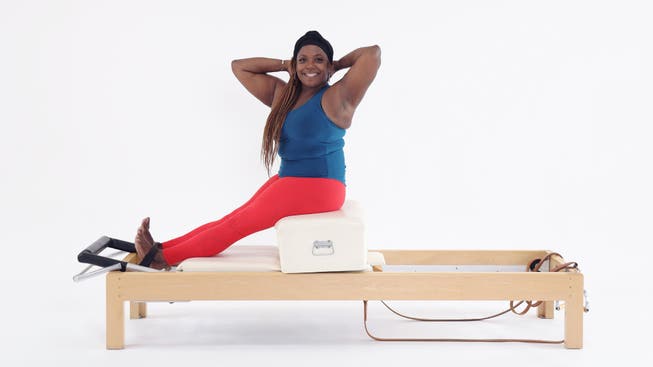
Benefits of Reformer Pilates
From a single apparatus, Pilates Reformer repertoire offers tremendous versatility by including exercises that you can perform lying down, sitting, kneeling, or standing. Unlike most strength training equipment that is designed to train one or two muscles at a time, Reformer workouts are good for working the muscles of the body in concert with one another, resulting in a balanced physique and leaving no muscle over or under-trained. Depending on the exercise, the Reformer’s spring-based resistance either adds challenge or supports the body as it moves through space.
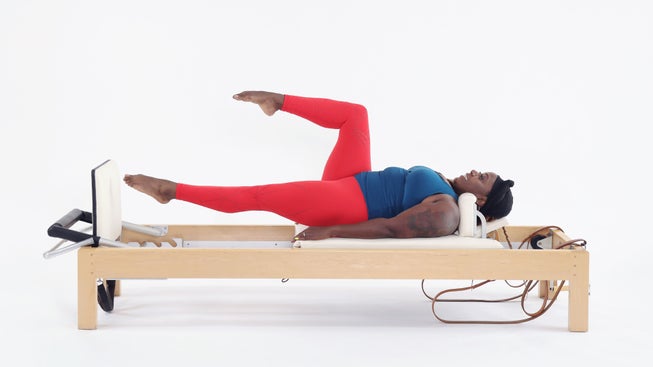
The places where the body is in contact with the Reformer provides feedback in helping your mind orient your body in space. In fact, it’s one of the reasons Pilates is known for improving body awareness and the mind-body connection. Joseph Pilates created the Reformer (as well as other equipment) to enable his clients to gain the strength and control necessary for his signature Matwork. While on the Mat, however, you only use your own body weight as resistance. In comparison to Reformer exercises, the straps provide additional resistance while the visual and tactile landmarks of the Reformer help you maintain good form.
Pilates Reformer Exercises
Footwork - Toes
Footwork - Toes
This exercise strengthens the legs and feet while warming up your whole body. There are several different positions of the feet in footwork.
Long Stretch
Long Stretch
This exercise strengthens the abdominals and challenges stability on the moving carriage.
Reformer Accessories
Reformers are equipped with several accessories that are used for specific exercises. The largest of these accessories is the Reformer Box, a removable platform that elevates the carriage. Depending upon the exercise, the Box can be placed horizontally or vertically. Pilates exercises with the Box in the vertical position are called the Long Box series and those that require the Box to be in a horizontal position, perpendicular to the carriage, are referred to as the Short Box exercises. In Short Box, the exerciser sits atop the box with one or both feet hooked under a Foot Strap at the base of the Reformer. This strap provides stability and is important for safety. Removable loops, also known as “Extension Straps”, extend the straps or ropes that are used in Leg Circles or arm work, providing more challenge in advanced Pilates exercises like the Long Spine Stretch.
The optional Pilates Jump Board is a sturdy, padded plate that screws or slips into the base of the Reformer. Lying down on the Reformer with the feet in contact with the Jump Board, you replicate the feeling of standing work, but with very little impact on the joints. When used with light spring tension, the Jump Board provides a very challenging yet safe cardiovascular workout.
Reformer Maintenance
The Pilates Reformer is a big-ticket item and like other expensive purchases, it requires regular maintenance. We suggest you regularly check your Reformer springs for signs of wear such as bulges, unevenness, splintering, odd sounds, etc., and replace them as needed. A good rule of thumb is to replace your springs every two years.
To clean your Reformer, we recommend wiping down the rails and carriage daily with a microfiber towel. Using a solution of water and regular dish soap, you will effectively remove grease, germs, and dirt from your Reformer. Traditional disinfectants or “organic” products like tea tree or lavender essential oils should be avoided, as they will break down your Reformer’s upholstery over time. If you prefer to outsource maintenance on your Reformer, the manufacturer’s website can usually connect you to a technician in your area.
